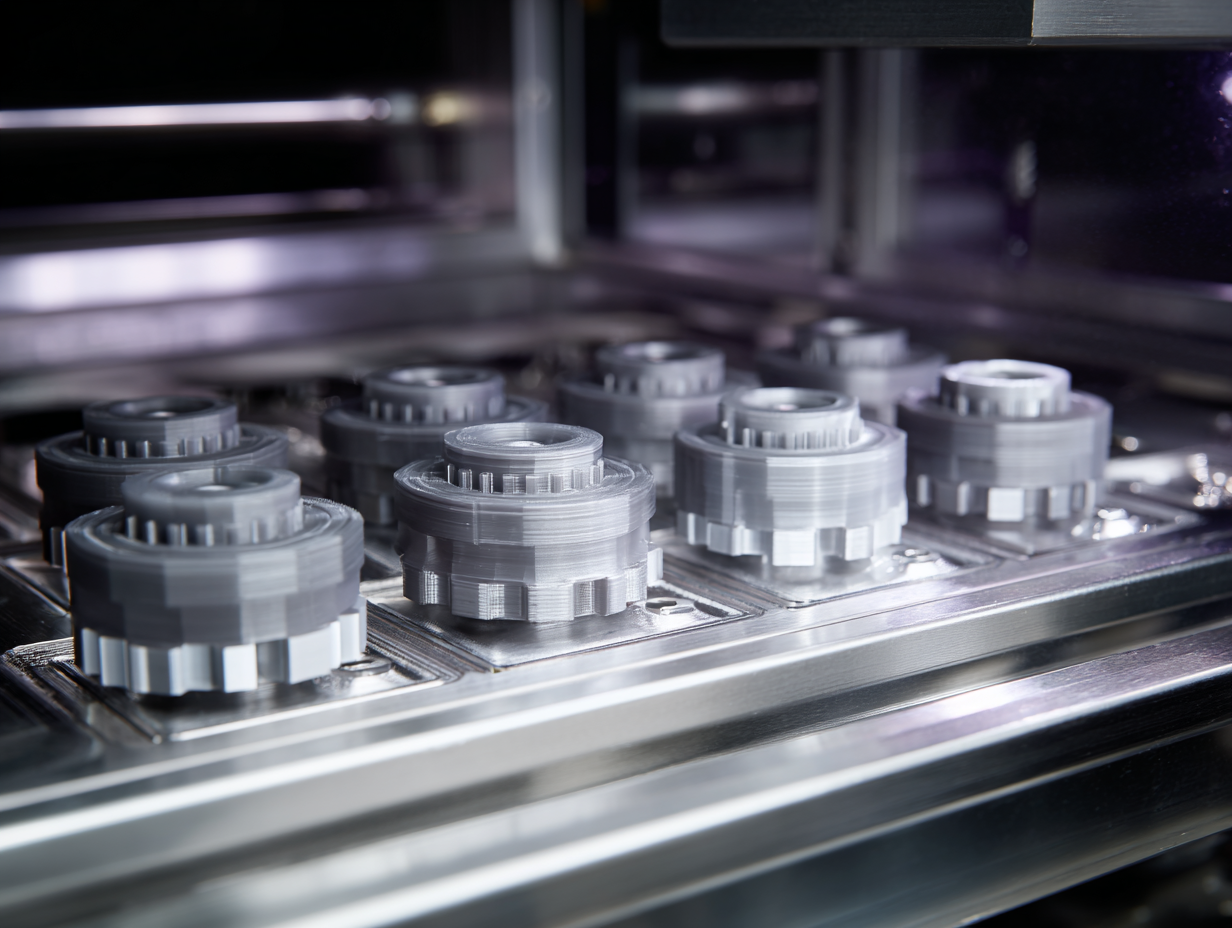
우리의 일상은 수많은 상품으로 채워져 있습니다. 손안의 스마트폰, 최신 유행을 담은 의류는 현대 소비 사회의 풍요를 상징합니다. 우리는 저렴한 가격으로 편리함과 만족감을 얻지만, 그 가격표 너머에 숨겨진 진실에 대해서는 얼마나 알고 있을까요?
이 글은 우리의 소비 행위가 저개발국의 노동자들에게 가해지는 ‘구조적 폭력(structural violence)’의 일부가 될 수 있다는 불편한 가설에서 출발합니다. 구조적 폭력은 사회·경제적 시스템 자체에 내재하여 특정 집단의 잠재력 실현을 억압하는 보이지 않는 폭력입니다. 저렴한 제품을 향한 끝없는 수요와, 그 수요를 맞추기 위해 비인간적인 노동 환경을 강요하는 글로벌 공급망이 바로 이 폭력의 핵심 메커니즘입니다.
따라서 진정한 윤리적 소비는 단순히 ‘착한 기업’의 제품을 구매하는 것을 넘어, 생산의 본질을 직시하고 그 안에 담긴 폭력성을 거부하는 능동적인 행위여야 합니다. 이 거대한 폭력의 굴레를 끊어낼 대안으로서, 산업용 3D프린팅 기술이 제시하는 새로운 패러다임과 가능성을 탐색하며 우리가 나아가야 할 길을 모색하고자 합니다.
글로벌 공급망의 구조적 폭력

오늘날 글로벌 공급망의 착취 구조를 이해하기 위해서는 그 원형이라 할 수 있는 역사적 선례를 살펴볼 필요가 있습니다. 19세기 말, 벨기에 국왕 레오폴드 2세의 사유지였던 '콩고 자유국'에서 벌어진 비극은 현대 착취 구조의 청사진을 보여줍니다.
당시 폭발적으로 증가한 고무 수요를 맞추기 위해, 레오폴드 2세는 콩고 원주민들에게 비현실적인 할당량을 부과하고 이를 채우지 못하면 가혹한 처벌을 가하는 공포 정치를 시행했습니다. 이 시스템의 핵심은 다음과 같습니다.
- 수요와 공급: 서구 시장의 폭발적인 수요(고무)가 저개발 지역의 자원과 노동력을 목표로 삼았습니다. 이는 오늘날 패스트 패션, 스마트폰 등 소비재로 형태만 바뀌었을 뿐입니다.
- 책임 회피 구조: 레오폴드 2세는 사설 군대와 민간 회사를 앞세워 직접적인 책임을 회피했습니다. 현대의 글로벌 브랜드들 또한 복잡한 하청 구조 뒤에 숨어 공급망 말단에서 벌어지는 착취에 대한 책임을 외면합니다.
- 이윤 극대화를 위한 비인간화: 콩고 원주민들은 고무 채취를 위한 ‘도구’로 전락했고, 그들의 인권은 생산량이라는 숫자 아래 무시되었습니다.

이러한 착취의 역사는 오늘날 캄보디아 의류 공장과 콩고민주공화국의 코발트 광산에서 이름만 바꾼 채 반복되고 있습니다. 캄보디아 의류 공장 노동자들은 글로벌 패션 브랜드의 저가 경쟁 압력 속에서 강제 초과 근무와 불안정한 단기 계약에 시달립니다. 스마트폰과 전기차 배터리의 필수 원료인 코발트는 콩고민주공화국 아동들의 고된 노동으로 채굴되고 있습니다.
7살 아이들까지 기본적인 보호 장비 없이 유독성 먼지 속에서 일하며 하루 1~2달러를 벌고, 이 ‘블러드 코발트’는 불투명한 공급망을 통해 글로벌 빅테크 기업의 제품으로 흘러 들어갑니다.
3D프린팅이 제안하는 3가지 해결책
이 거대한 구조적 폭력의 고리를 끊기 위해서는 개인의 윤리적 소비를 넘어 시스템 자체를 바꿀 수 있는 근본적인 해법이 필요합니다. 산업용 3D프린팅 기술은 바로 이 지점에서 생산의 지리적·경제적 논리를 재편하는 강력한 ‘패러다임 전환’의 가능성을 제시합니다.
분산형 생산

구조적 폭력의 핵심은 저임금 노동력을 찾아 전 세계를 떠도는 글로벌 공급망에 있습니다. 기업들은 생산 비용을 낮추기 위해 노동
인권이 취약한 국가로 공장을 이전하고, 이는 현지 노동자 착취로 이어집니다.
산업용 3D프린팅은 이러한 중앙집중식 대량생산 모델을 ‘분산형 맞춤 생산’으로 전환할 수 있는 잠재력을 가집니다. 제품이 필요한 소비자와 가까운 곳에서, 자동화된 3D프린팅 시스템을 통해 즉시 생산하는 것입니다. 이는 저임금 노동력에 의존하는 현행 글로벌 공급망 모델의 근간을 흔들 수 있습니다. 더 이상 생산 기지가 특정 지역의 저렴한 인건비에 묶일 필요가 없어지므로, 착취의 지리적 기반 자체가 와해될 수 있습니다.
가치 중심 생산: ‘빠른 소비’에서 ‘지속 가능한 소유’로

패스트 패션으로 대표되는 현대 소비문화는 ‘더 싸게, 더 많이’를 추구하며 생산자에게 끊임없는 압박을 가합니다. 이로 인해 노동자들은 비현실적인 생산 목표와 촉박한 납기일에 시달리게 됩니다.
3D프린팅은 주문형 생산(On-demand)을 기본으로 합니다. 재고를 쌓아두고 판매하는 방식이 아니라, 고객의 주문이 있을 때 비로소 제작에 들어갑니다. 이는 불필요한 과잉 생산과 재고 폐기 문제를 해결할 뿐만 아니라, 생산 현장에 가해지는 무리한 속도 경쟁의 압력을 줄여줍니다.
또한, 개인에게 최적화된 맞춤형 제품을 제작함으로써, 쉽게 버려지는 일회성 제품이 아닌 오래도록 가치를 지니는 제품을 만들 수 있습니다. 이는 소비의 패러다임을 ‘저렴한 가격’에서 ‘지속 가능한 가치’로 전환시키는 중요한 계기가 될 수 있습니다.
투명한 생산

코발트 공급망 사례에서 보듯, 복잡하고 불투명한 하청 구조는 기업이 책임을 회피하는 편리한 방패가 됩니다. 원자재가 어디서 왔는지, 누가 만들었는지 추적하기 어려운 구조 속에서 아동 노동과 같은 인권 침해가 발생해도 기업은 ‘몰랐다’고 주장할 수 있습니다.
3D프린팅은 디지털 데이터를 기반으로 한 투명한 생산 과정을 전제로 합니다. 설계 파일부터 소재 정보, 생산 이력까지 모든 과정이 데이터로 기록되고 추적이 가능합니다.
이는 공급망의 투명성을 획기적으로 높여, 기업이 ‘의도적 무지’ 뒤에 숨는 것을 어렵게 만듭니다. 소비자와 규제 기관은 검증 가능한 데이터를 기반으로 기업에게 공급망 전체에 대한 책임을 물을 수 있게 되며, 이는 진정한 의미의 기업 윤리를 실현하는 강력한 기반이 됩니다.
기술을 넘어선 시민의 역할

3D프린팅 기술은 착취적인 시스템을 리셋할 강력한 도구이지만, 그 자체로 만병통치약은 아닙니다. 기술의 가능성을 현실로 만드는 것은 결국 우리의 선택과 노력에 달려 있습니다. 우리는 수동적인 ‘소비자’를 넘어, 책임을 자각한 ‘시민’으로 거듭나야 합니다.
기업에게 공급망 전체에 대한 투명한 정보 공개를 집요하게 요구하고, 클린 클로즈 캠페인(Clean Clothes Campaign)과 같은 노동 인권 단체의 활동에 연대하며, 기업의 인권 침해에 법적 책임을 묻는 ‘기업 인권 실사법’과 같은 제도적 장치 마련을 지지해야 합니다.
기술로 만드는 더 나은 세상

우리가 일상적으로 소비하는 제품의 가격표 뒤에는 복잡한 글로벌 시스템과 그 안에서 희생되는 사람들의 이야기가 숨어 있습니다. 우리의 소비는 결코 중립적이지 않으며, 우리가 어떤 세상을 지지하는지를 보여주는 투표 행위와 같습니다.
산업용 3D프린팅 기술은 기존의 착취적 생산 구조를 근본적으로 바꿀 수 있는 혁신적인 대안을 제시합니다. 분산형, 주문형, 가치 중심의 투명한 생산 방식은 더 이상 저임금 노동력에 의존하지 않는, 보다 인간적이고 지속 가능한 제조 생태계를 구축할 수 있는 가능성을 열어줍니다.
우리가 지불하는 돈이 누군가의 고통을 연장하는 대신, 더 공정하고 인간적인 세상을 만드는 데 기여하도록 하는 것. 가격표 너머의 ‘사람’을 보는 것. 그것이야말로 폭력의 시대를 끝내고 새로운 연대의 시대를 여는 우리의 책임일 것입니다.
GLUCK, 산업용 3D프린팅 제조 파트너
GLUCK은 대량생산이 가능한 산업용 3D프린팅 서비스 기업입니다. 작은 아이디어를 반복 가능한 생산성으로 전환해, 현실 가능한 제조 솔루션을 제공합니다.
지금 글룩에 문의해 보세요!
📩 제작 및 상담 문의: support@glucklab.com
Beyond the Price Tag: Rethinking Consumption Through Industrial 3D Printing

From the smartphone in your hand to the latest fashion trends, our daily lives are filled with products that represent convenience and abundance. We enjoy the benefits of low-cost goods, but how often do we stop to consider what lies behind those price tags?
This piece begins with an unsettling question: Could our consumption habits be contributing to structural violence — a hidden force embedded in global supply chains that suppresses the potential and rights of workers in developing nations?
True ethical consumption requires more than just buying from “good companies.” It calls for a deeper awareness of how products are made, and a conscious refusal to participate in systems that rely on exploitation. This article explores how industrial 3D printing can offer a radically different approach to manufacturing — one that disrupts exploitative systems and opens the door to a more human-centered production model.
🌍 Structural Violence in Global Supply Chains

To understand today’s exploitative global supply chain, we must revisit its historical blueprint. The tragedy of the "Congo Free State," the private colony of King Leopold II of Belgium in the late 19th century, illustrates this perfectly.
- Demand and Supply: The booming demand in Western markets (for rubber) targeted the resources and labor of underdeveloped regions. While the product has changed—from rubber to fast fashion and smartphones—the pattern remains.
- Responsibility Avoidance: Leopold used private armies and companies to avoid direct accountability. Today’s global brands similarly hide behind complex subcontracting layers to evade responsibility for exploitation.
- Dehumanization for Profit: The Congolese were reduced to tools for rubber collection, and their human rights were crushed beneath production quotas.

This historical exploitation is still happening today under different names in Cambodia’s garment factories and the cobalt mines of the Democratic Republic of Congo. In Cambodia, workers suffer from forced overtime and unstable contracts due to global fashion brands’ race to the bottom. In Congo, children as young as seven mine cobalt—an essential material for smartphones and EV batteries—without safety gear for $1–2 per day. This “blood cobalt” enters the supply chain of major tech giants through opaque networks.
🛠️ Industrial 3D Printing: A Tool for Systemic Change
To break this massive structure of violence, we need more than individual ethical consumption—we need a fundamental change in the system. Industrial 3D printing offers a paradigm shift in how and where products are made.
1. Distributed Manufacturing

At the heart of structural violence lies the global supply chain's relentless hunt for cheap labor. Companies shift factories to countries with poor labor rights, resulting in exploitation.
Industrial 3D printing has the potential to flip the centralized, mass-production model into a distributed, on-demand system. Products can be printed near the point of consumption, using automated 3D printing systems. This removes the need to relocate factories based on cheap labor—disrupting the geographic basis of exploitation.
2. Value-Driven Production: From Fast Consumption to Sustainable Ownership

Fast fashion promotes a culture of “cheaper, faster” which leads to unrealistic deadlines and inhumane workloads for workers.
3D printing operates on an on-demand basis. Instead of producing large quantities in advance, products are made only when needed. This reduces overproduction, waste, and the pressure on factories. It also allows for personalized, durable products tailored to individual needs—shifting the paradigm from “low price” to “lasting value.”
3. Transparent and Traceable Processes

3D printing relies on digital files, which record every step from design to production. This transparency makes it easier to trace materials, monitor production conditions, and hold companies accountable. It’s a step toward ethical supply chains, where “I didn’t know” is no longer an excuse.
As seen in the cobalt supply chain, complex and opaque subcontracting structures allow corporations to hide behind “plausible deniability.” When asked about child labor, they claim ignorance.
3D printing is inherently digital and traceable. Every step—design files, materials, production logs—is recorded and auditable. This brings unprecedented transparency to manufacturing. Consumers and regulators can hold companies accountable based on verifiable data, promoting genuine corporate ethics.
👥 The Role of Citizens Beyond Technology

3D printing is a powerful tool to reset the exploitative system, but it is not a cure-all. The key to realizing its potential lies in our choices. We must evolve from passive consumers to responsible citizens.
We must demand transparency across the supply chain, support labor rights groups like the Clean Clothes Campaign, and push for legal frameworks such as Human Rights Due Diligence laws that hold corporations accountable.
✨ Building a Better World with Technology

Behind every product we use is a complex web of labor and resources. Our purchasing decisions are not neutral — they’re statements about the kind of world we want to support.
Industrial 3D printing doesn’t just offer technical innovation. It presents a path to reshape production in ways that are transparent, localized, and human-centered — removing the need for exploitative labor practices and replacing them with ethical, efficient, and sustainable alternatives.
Let’s choose to see beyond the price tag. Let’s ensure our money builds a world we’re proud of.
GLUCK – Your Partner in Industrial 3D Printing
GLUCK is a leading provider of industrial 3D printing services with scalable production capabilities.
We help transform small ideas into repeatable manufacturing solutions.
📩 Inquiries: support@glucklab.com
#GLUCK #글룩 #3D프린팅 #산업용3D프린팅 #SLA3D프린팅 #대량생산 #DfAM #3D설계 #3D프린팅산업 #3D프린터 #3D모델링 #3D프린팅가격 #3D프린팅업체 #금형제작 #금형 #사출 #몰드제작 #3D프린팅견적 #3D출력 #윤리적생산 #지속가능제조 #공정한공급망 #MassProduction #3DPrinting #LargescaleProduction #AdditiveManufacturing #SLAtechnology #ManufacturingInnovation #DigitalTransformation #SmartManufacturing #EthicalManufacturing #SustainableProduction #FairSupplyChain
'인사이트 (Insights)' 카테고리의 다른 글
| 데이터로 본 한국 3D프린팅 산업과 전략 (0) | 2025.07.21 |
|---|---|
| 이젠 3D모델링도 AI한테 맡긴다? (0) | 2025.07.18 |
| STL에서 3MF까지, 3D프린팅 파일 포맷의 역사와 미래 제조산업 (1) | 2025.07.16 |
| 버려진 것들로 만든 아름다움 : 지속 가능한 3D프린팅 패션 (1) | 2025.07.15 |
| 미래형 공간 설계를 위한 인테리어 소재 혁신, 산업용 3D프린팅의 융합 (1) | 2025.07.15 |
